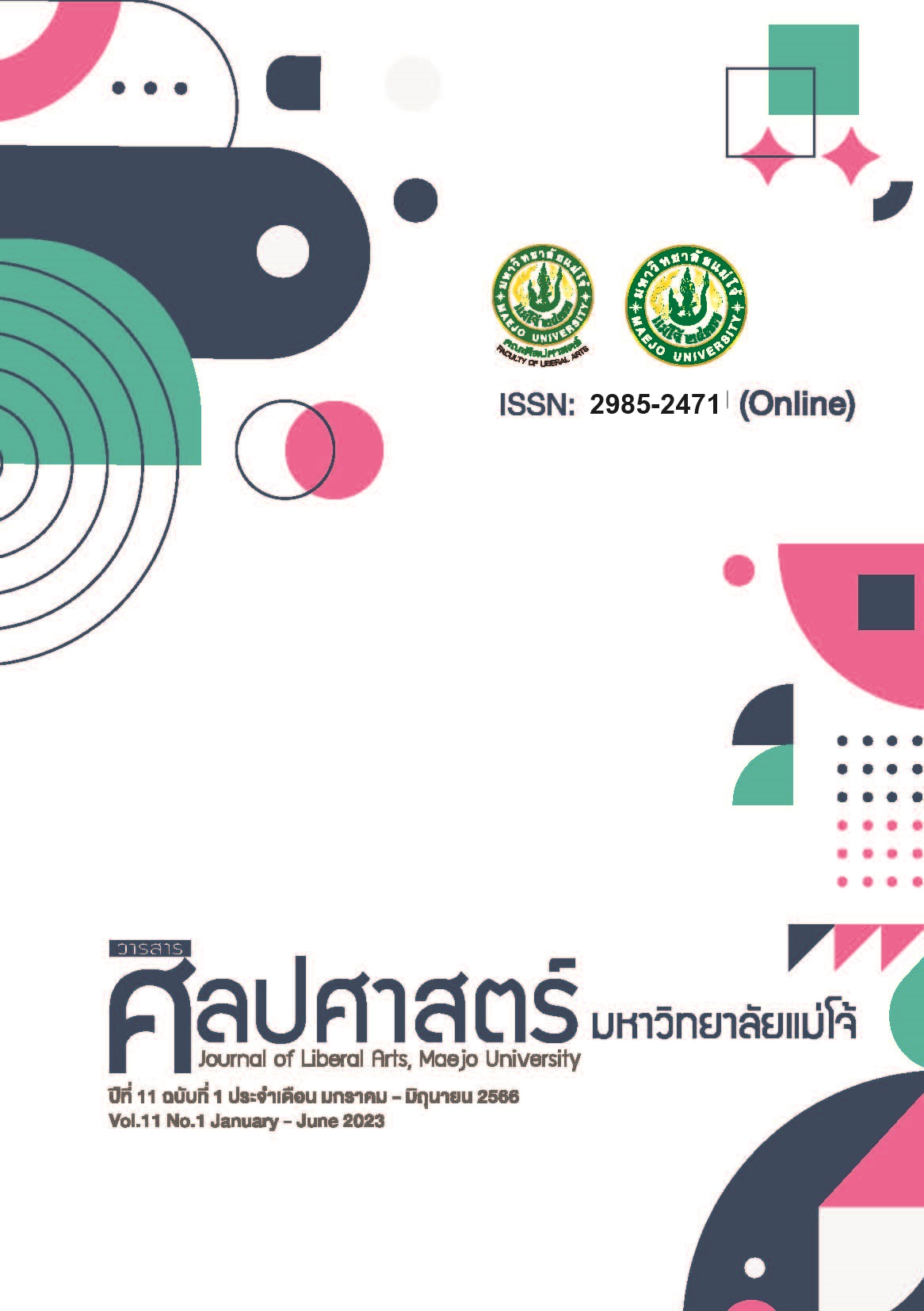The Behavioral Intention and Use of Digital Technology in Generation Z during Thailand COVID-19 Pandemic
Main Article Content
Abstract
This research aims to study the influence of perceived ease of use on perceived usefulness of Generation Z digital technology adoption; to study the influence of perceived usefulness, perceived ease of use, risk, and trust on the behavioral intention of Generation Z in digital technology use; and to study the influence of behavioral intention on the digital technology use of Generation Z in Thailand. The researchers were interested in the studying of Generation Z people born between 1995 and 2012, who were skilled and fluent in digital technology. A total of 397 sample respondents were used in this study. The result of the IOC validity test of the entire questionnaire was 0.93, and the result of the reliability test of the entire questionnaire with Cronbach’s Alpha was 0.97. The research data were collected by a convenient and purposeful randomized method, and the data were collected using an online questionnaire. Statistical analysis of the study was performed using descriptive statistics and path analysis with the PLS-SEM method. The results revealed that (1) perceived ease of use significantly affected perceived usefulness, (2) four key factors included perceived usefulness, perceived ease of use, risk, and trust had a significant effect on behavioral intention of digital technology use, and (3) behavioral intention of Generation Z positively influenced actual use of digital technology during COVID-19 situation. The results of this study provide insights into the perceptions and behaviors of Generation Z in Thailand during the coronavirus situation, which will benefit organizations involved in the use of digital technology in this population.
Article Details

This work is licensed under a Creative Commons Attribution-NonCommercial-NoDerivatives 4.0 International License.
ต้นฉบับที่ได้รับการตีพิมพ์ในวารสารคณะศิลปศาสตร์ มหาวิทยาลัยแม่โจ้ ถือเป็นกรรมสิทธิ์ของมหาวิทยาลัยแม่โจ้ ห้ามนำข้อความทั้งหมดหรือบางส่วนไปพิมพ์ซ้ำ เว้นเสียแต่จะได้รับอนุญาตจากมหาวิทยาลัยฯ เป็นลายลักษณ์อักษรReferences
Abrahao, R. S., Moriguchi, S. N., & Andrade, D. F. (2016). Intention of adoption of mobile payment: An analysis in the light of the unified theory of acceptance and use of technology (UTAUT). Revista de Administracao e Inovacao, 13, 221-230.
Acharya, V., Junare, S. O., & Gadhavi, D. D. (2019). E-payment: Buzz word or reality. International Journal of Recent Technology and Engineering, 8(3S2), 397-404.
Cabrera-Sanchez, J., & Villarejo-Ramos, A. F. (2019). Factors affecting the adoption of big data analytics in companies. Revista de Administracao de Empresas, 59(6), 415-429.
Chao, C. M. (2019). Factors determining the behavioral intention to use mobile learning: An application and extension of the UTAUT model. Frontiers in Psychology, 10, 1-14.
Cochran, W. G., 1977. Sampling techniques (3rd ed.). New York: John Willey and Sons.
Diop, E. B., Zhao, S., & Duy, T. V. (2019). An extension of the technology acceptance model for understanding travelers’ adoption of variable message signs. PLoS ONE, 14(4), 1-17.
Dwivedi, Y. K., Hughes, D. L., Coombs, C., Constantiou, I., Duan, Y., Edwards, J. S., Gupta, B., Lal, B., Misra, S., Prashant, P., Raman, R., Rana, N., Sharma, S. K., & Upadhyay, N. (2020). Impact of COVID-19 pandemic in information management research and practice: Transforming education, work and life. International journal of Information Management, 55, 1-20.
Gaidhani, S., Arora, L., & Sharma, B. K. (2019). Understanding the attitude of generation Z towards workplace. International Journal of Management, Technology and Engineering, 9(1), 2804-2812.
Hair, J. F., Black, W. C., Babin, B. J., & Anderson, R. E., (2014). Multivariate data analysis (7th ed.). US: Pearson Education.
Hau, H. T., Nhung, D. T. H., & Trang, P. H. (2020). An empirical analysis of factors affecting the intention of using digital wallets in Vietnam. Journal of International Economics and Management, 21(1), 86-107.
Kalayou, M., H., Endehabtu, B., F., & Tilahun, B. (2020). The applicability of the modified technology acceptance model (TAM) on the sustainable adoption of eHealth systems in resource-limited settings. Journal of Multidisciplinary Healthcare, 13, 1827-1837.
Kenny, J. & Dutt, C. 2021). The long-term impacts of hotel’s strategic responses to COVID-19: The case of Dubai. Tuorism and Hospitality Research, 0(0), 1-15.
Khechine, H., Lakhal, S., Pascot, D., & Bytha, A. (2014). UTAUT model for blended learning: The role of gender and age in the intention to use webinars. Interdisciplinary Journal of E-Learning and Learning Objects, 10, 33-52.
Liebana-Cabanillas, F., Sanchez-Fernandez, J., & Munoz-Leiva, F. (2014). Antecedents of the adoption of the new mobile payment systems: The moderating effect of age. Computers in Human Behavior, 35, 464-478.
Moqbel, M., Bartelt, V., & Cicala, J. (2014). Personal cloud user acceptance: The role of trust and perceived risk in the technology acceptance model. Proceedings of the southwest decision science institute forty-fifth annual conference. Dallas, TX, 881-889.
Ogwel, B., Otieno, G., & Odhiambo-Otieno, G. (2020). Cloud computing adoption by public hospitals in Kenya: A technological, organizational and behavioral perspective. International Journal of Scientific and Research Publications, 10(1), 33-43.
Piccarozzi, M., Silvestri, C., & Morganti, P. (2021). COVID-19 in management studies: A systematic literature review. Sustainability, 13, 1-30.
Salim, B. (2012). An application of UTAUT model for acceptance of social media in Egypt: A statistical study. International Journal of Information Science, 2(6), 92-105.
Salleh, M. S. M., Mahbob, N. N., & Baharudin, N. S. (2017). Overview of generation Z behavioral characteristic and its effect towards hostel facility. International Journal of Real Estate Studies, 11(2), 59-67.
Venkatesh, V., Thong, J. Y. L., & Xu, X. (2016). Unified theory of acceptance and use of technology: A synthesis and the road ahead. Journal of the Association for Information Systems, 17(5), 328-376.

